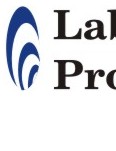 |
 |
 |
 |
 |
|
 |
 |
 |
 |
 |
|
 |
 |
 |
 |
 |
|
 |
 |
 |
 |
 |
|
 |
 |
 |
 |
 |
|
RETRENCHMENT
Retrenchments, transfer of business and
insolvency:
A reason to initiate retrenchment, relating to the business's
"operational requirements", must exist for a lawful retrenchment to take
place under South African law . Employers are able to
terminate the services of an employee (retrenchment) for one of the
following reasons: economic, technical or structural reasons.
The procedure that needs to be followed for a dismissal based on
"operational requirements" (retrenchments) is regulated in terms of
section 189 of the Labour Relations Act. The required procedure is
as follows: 1. Consultation:
Employees are entitled to the minutes of all meetings. CCMA may be asked to intervene on request from employer.
2. Retrenchment: Disclosing of information
in writing: When contemplating retrenchments, the organisation must issue letters to all employees in the affected unit, advising them of the pending retrenchment and the date when consultations will commence. Decisions concerning retrenchment cannot/ should not be made prior to the consultative process taking place. An employer has to disclose relevant information in writing, including -
Should there be a dispute about information provided, it will be up
to the employer to show why information is not relevant.
3. Opportunity for Feedback
The employer must give the other consulting party an opportunity to make
presentations. Representations must be considered and be responded to by
the organisation.
4. Criteria for selection If no agreement is reached on the criteria for selection, criteria must be fair and objective. (The LIFO [last in first out] principle is often applied at the time of retrenchment, but is not the only consideration. Employees with key established skills or who occupy a specific specialized position may be retained, and a poor performance record may be taken into consideration.) Offers of alternative employment should be made known and offered to all employees. Voluntary retrenchment offers must be considered initially during consultation before being offered to employees. The terms must be clearly defined to ensure that there is no dispute thereafter. Statutory notices of termination of services are handed to those employees who are to be retrenched once the consultation process has been completed and all employees' counter proposals, questions and concerns have been addressed in writing. LARGER RETRENCHMENTS The following
provisions apply if an employer with fifty
or more employees contemplates retrenching either -
Part-time workers and casual workers are employees for the purposes of
the statute. In this regard, the new section 200A presumes other
categories of persons to be employees, unless the contrary is
established.
Once retrenchments are contemplated, the employer must deal with an
identified consulting partner according to the following hierarchy: -
Section 189(3) requires the employer to issue a notice in the form of an
invitation to begin a consultation process to the relevant consulting
parties. When notice is given, the employer is required to disclose all
relevant information and in the event of a dispute regarding disclosure,
the onus will now be on the employer to show the information sought is
not relevant.
A process of consultation needs to be embarked on which is defined as
"an engagement in a meaningful joint consensus seeking process" in an
attempt to reach consensus on issues such as measures to avoid or
mitigate retrenchment; selection criteria; and severance pay.
After the conclusion of the sixty day facilitation process, and if there
is no consensus between the parties, the employer is then entitled to
give notice of termination of contracts of employment in terms of
section 37(1) of the Basic Conditions of Employment Act and a registered
union or the employees who have received notice of termination may
either -
If neither party requires the appointment of a statutory facilitator,
the parties may not dismiss or engage in industrial action or refer a
dispute to the Labour Court respectively, for an equivalent sixty day
period. If any consulting party wishes to challenge the fairness of a consultation process, it may challenge the outcome in the Labour Court. Any application in this regard must be brought within thirty days of the issuing of a notice of termination of employment. HANDLING A DISPUTE ON RETRENCHMENT
Workers may elect after the consultation process to either strike,
in certain circumstances, or refer the matter to the Labour Court
for adjudication.
Strikes should be conducted in terms of section 64, essentially like
all other strikes. If you want to challenge the lawfulness of a retrenchment, you should immediately refer this matter to the CCMA for conciliation. You should consider approaching a labour attorney/ expert for assistance to ensure that your rights are protected... (Call Labour Protect on 0860 522687 to arrange to consult with the nearest labour expert on the network.)
If
a retrenchment dispute is not resolved in conciliation, then the matter
may be referred either to arbitration or to the Labour Court.
Previously a retrenchment matter not resolved at conciliation had to be
referred to the Labour Court. However now section 191(12) of the
Labour Relations Act seeks to lessen the Labour Court's work load in
that individual employees who have been retrenched will have an election
to refer the dispute either to arbitration or to the Labour Court. (It
may be more expeditious with regard to time and cost savings to
arbitrate, rather than proceeding to the Labour Court.) Relevant Legislation: Labour Relations Act 1995 (section 189) and Basic Conditions of Employment Act 1997 sections 35, 37 and 41. This document is based on literature available from the CCMA Labour Law useful links advice payment on retrenchment conciliation formal grievance procedure remuneration definition UIF payments UIF benefits Pension Fund Disputes jobs in South Africa |
|
|National Assistance: 0860 LABOUR/ 0860 522687
|
||||
| To join... | ||||
| (the Membership Fee is only R85pm): | ||||
|
||||